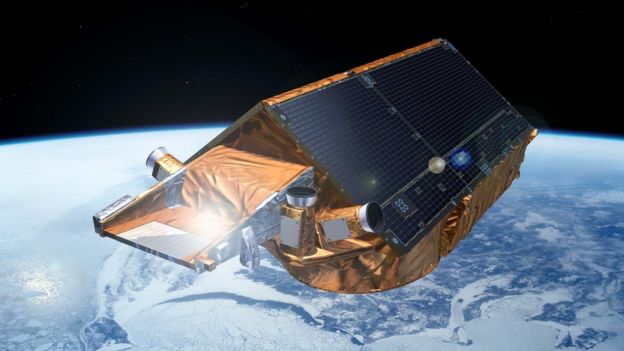An analysis of 79 ice cores collected from the continent reveals a 10% increase in snowfall in Antarctica
creditos: SciTech Europe
A queda de neve na Antárctida aumentou em cerca de 10% nos últimos 200 anos, segundo um estudo apresentado dia 9 de Abril na reunião da União Europeia de Geociências (UEG), em Viena, Áustria.
A equipa internacional de investigação, liderada pela British Antarctic Survey, analisou 79 núcleos de gelo recolhidos no continente antárctico, de modo a analisar as alterações na queda de neve e o impacto no nível das águas do mar.
Este estudo britânico analisou a queda de neve no continente gelado entre 1800 e 2010. Os resultados elevam as esperanças de desaceleração no aumento do nível das águas dos oceanos. Estudo publicado na revista Climate of the Past.
O estudo mostra que houve um significativo aumento da queda de neve entre 1800 e 2010, o que pode ter impacto global no nível das águas do mar.
Os resultados da investigação mostram assim que a crescente queda da neve pode contribuir para desaceleramento do aumento do nível do mar.
Dr Liz Thomas, autora do estudo
créditos: British Antarctic Survey
"Existe uma necessidade urgente de entender a contribuição do gelo antárctico para o aumento do nível do mar e foram usadas várias técnicas para determinar o balanço entre a queda de neve e a perda de gelo. Quando a perda de gelo não é restituída pela queda de neve, o nível do mar aumenta",
Liz Thomas, principal autora do estudo
in Phys.org
A maior parte da neve caiu na Península Antárctica, no Hemisfério Ocidental. "Os nossos resultados mostram uma mudança significativa no balanço da massa superficial [de gelo] durante o século XX.
A maior contribuição é da Península Antárctica, onde a queda de neve média anual durante a primeira década do século XXI é 10% mais elevada do que no mesmo período no século XIX", acrescenta Liz Thomas.
*Nota: Oiça a entrevista com Dr Liz Thomas aqui
No entanto, a equipa de investigação faz questão de relembrar que os aumentos de queda de neve não invalidam as observações respeitantes ao degelo, registadas pelos satélites ao longo dos últimos 25 anos.
Embora o aumento na queda de neve, desde 1900, tenha ajudado a baixar o nível das águas do mar em cerca de 0,04 milímetros a cada década, o aquecimento global tem provocado o degelo da parte inferior dos glaciares, o que, pelo contrário, provoca o aumento do nível das águas. Leia mais aqui
Much of the extra snow has fallen on the Antarctic Peninsula
credits: SPL
Scientists have compiled a record of snowfall in Antarctica going back 200 years.
Dr Liz Thomas presented the results of the study at the European Geosciences Union (EGU) General Assembly here in Vienna, Austria.
The study shows there has been a significant increase in precipitation over the period, up 10%.
The effect of the extra snow locked up in Antarctica is to slightly slow a general trend in global sea-level rise.
However, this mitigation is still swamped by the contribution to the height of the oceans from ice melt around the continent.
Some 272 billion tonnes more snow were being dumped on the White Continent annually in the decade 2001-2010 compared with 1801-1810.
Cores have been collected across the continent
- making this the largest study of its kind
credits: BAS
The British Antarctic Survey (BAS) researcher, Dr Liz Thomas said the work was undertaken to try to put current ice losses into a broader context. "The idea was to get as comprehensive a view of the continent as possible,".
"There's been a lot of focus on the recent era with satellites and how much mass we've been losing from big glaciers such as Pine Island and Thwaites. But, actually, we don't have a very good understanding of how the snowfall has been changing.
"The general assumption up until now is that it hasn't really changed at all - that it's just stayed stable. Well, this study shows that's not the case.”
Dr. Liz Thomas
*Note: Hear the interview with Dr. Liz Thomas here
Artwork: Satellites routinely map Antarctica,
but their data record is only about 25 years
credits: BAS
The previous, most extensive survey of this kind assessed just 16 cores. The new study is therefore much more representative of snowfall behaviour across the entire continent.
It found the greater precipitation delivered additional mass to the Antarctic ice sheet at a rate of 7 billion tonnes per decade between 1800 and 2010 and by 14 billion tonnes per decade when only the period from 1900 is considered.
Most of this extra snow has fallen on the Antarctic Peninsula, which saw significant increases in temperature during the 20th Century.Read more here
Geração 'explorer'
14.04.2018

Sources:
Público/ Ambiente
BBC/ Science & Environment
Phys.org






No comments:
Post a Comment